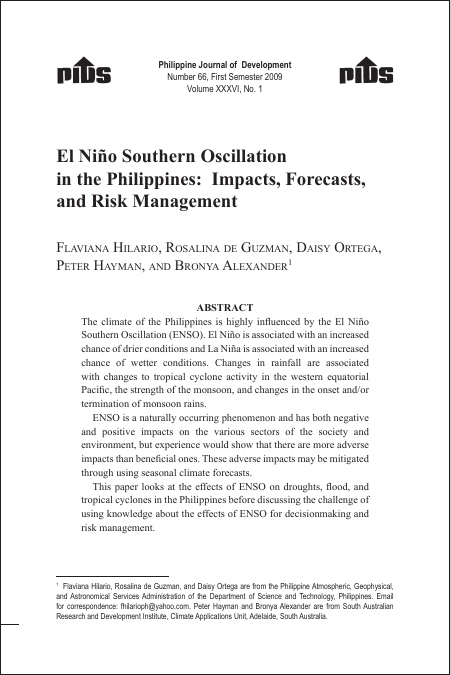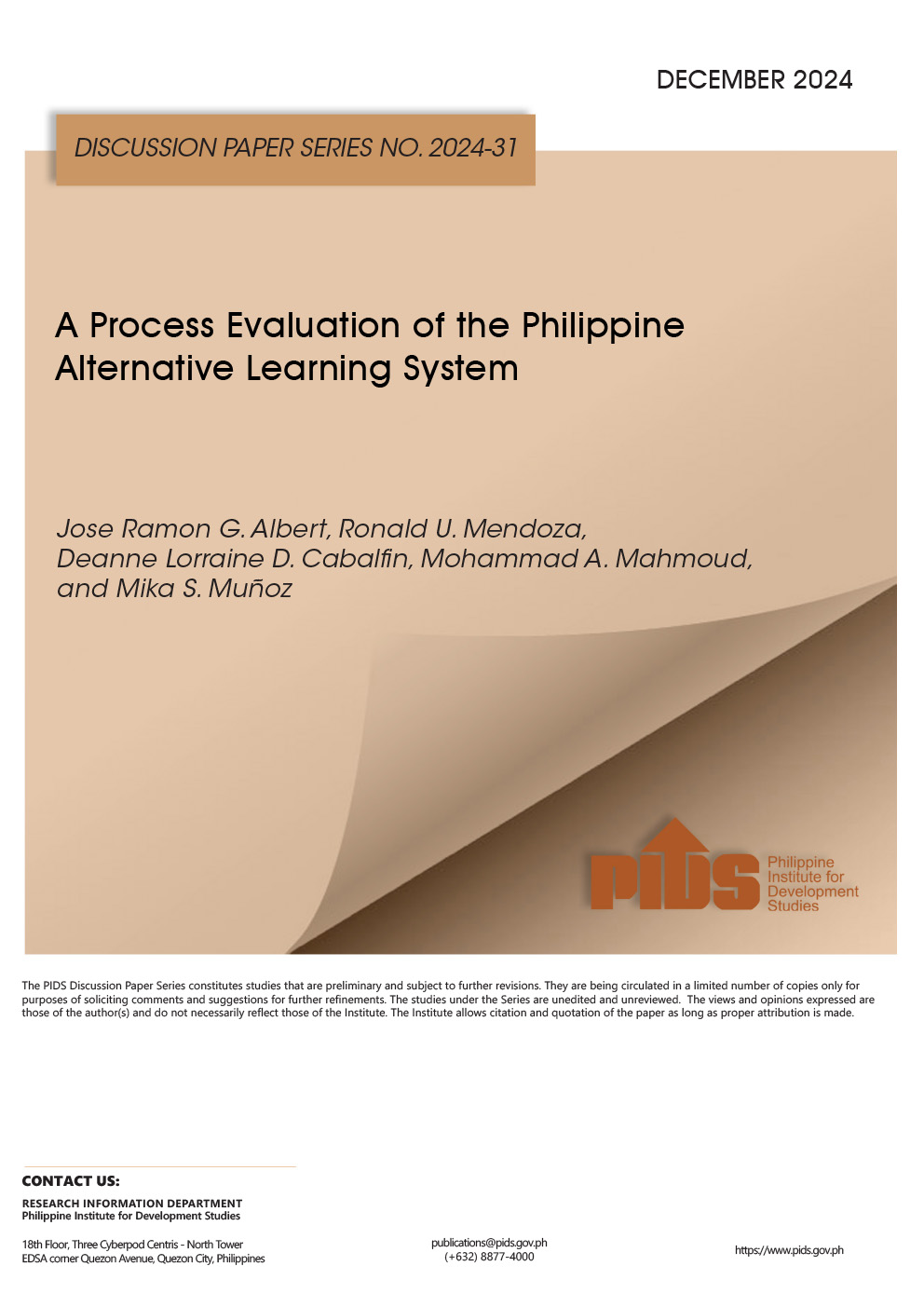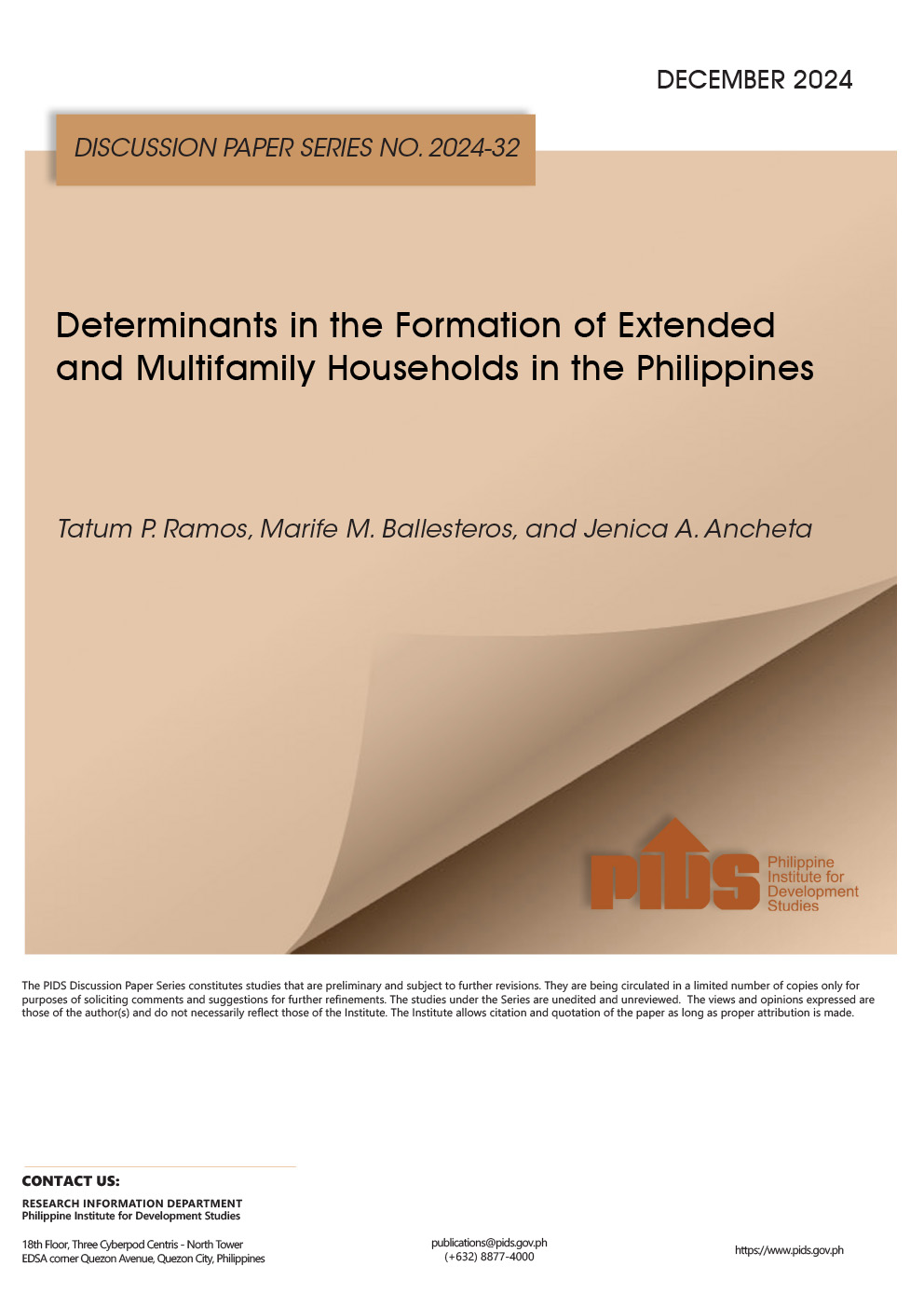The climate of the Philippines is highly influenced by the El Nino Southern Oscillation (ENSO). El Nino is associated with an increased chance of drier conditions and La Nina is associated with an increased chance of wetter conditions. Changes in rainfall are associated with changes to tropical cyclone activity in the western equatorial Pacific, the strength of the monsoon, and changes in the onset and/or termination of monsoon rains. ENSO is a naturally occurring phenomenon and has both negative and positive impacts on the various sectors of the society and environment, but experience would show that there are more adverse impacts than beneficial ones. These adverse impacts may be mitigated through using seasonal climate forecasts. This paper looks at the effects of ENSO on droughts, flood, and tropical cyclones in the Philippines before discussing the challenge of using knowledge about the effects of ENSO for decisionmaking and risk management.













